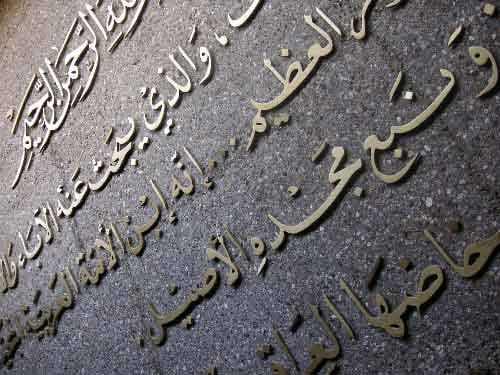Listen to Audio Version:
 A question I often get is, “How do I start thinking about getting this translation done?” Many of our customers ask themselves this question at some point. They realize that they are going to need their website, or their marketing materials, or their technical documents translated to meet the needs of their global clients. But they struggle with where to begin.
A question I often get is, “How do I start thinking about getting this translation done?” Many of our customers ask themselves this question at some point. They realize that they are going to need their website, or their marketing materials, or their technical documents translated to meet the needs of their global clients. But they struggle with where to begin.
Planning for Translation Starts with Corporate Strategy
The first place to start when you are thinking about translation services is to think about your corporate strategy and your corporate goals for the year. If your goals don’t include expanding into international markets, or you don’t have senior management’s support for doing translation, you need to step back and reevaluate the how and why of your translation project.
Some companies are more reactive to providing translations. They seek services when there is an increased demand for their products from customers in other countries.
And other companies need translation services because of regulations in the countries they want to expand into.
The best course is to be proactive by creating a corporate strategy that will align with your goals to expand.
Creating a Multilingual Strategy for Translation Services
Once you have created your corporate goals and you have the organizational support to proceed, you can then work on your marketing strategy. By developing a clear marketing plan that delineates your strategy, defines your goals and outlines your tactics, you will know your priorities for the year. With a clear plan, you understand your target audience and the appropriate messages. Once you know all this, your multilingual strategy will naturally follow. By being clear on your marketing strategy, you will have clear answers to the questions about countries, languages and materials involved.
Make sure that your multilingual marketing strategy supports your marketing strategy, which in turn supports your corporate strategy. Once the stars have aligned, you have a clear-cut case for making translation decisions during the year about the types of materials and into what languages you want to translate.
|
Defining Your Translation Process
Now that you know your corporate strategy and your marketing strategy and you’ve developed your multilingual strategy, you can begin to look at what the process is going to look like.
Considerations for creating a process include:
-
Who in your organization will be involved – who will project manage, who will do the translation, who will review the final product, etc.
-
It’s important to determine who will be involved in the translation process from start to finish, including reviews and edits. Options run the full gamut from managing and performing all the steps in-house, to partnering with an experienced translation agency who can manage projects for you, suggest best practices and work within your systems and procedures to guide the project.
-
-
What needs to be done?
-
Translation
-
Layout or desktop publishing in the new language – see our video on foreign language desktop publishing for tips on this.
-
-
What is your time frame?
-
With a well thought out marketing plan and multilingual strategy, you can save on rush fees by scheduling translation projects before they are due.
-
-
Do you need supporting services?
-
Multilingual strategy help
-
Diversity and inclusion training
-
Multilingual chat on your website
-
Phone interpretation services to speak to new customers in their language
-
-
What is the quality assurance process?
-
Will you use your professional translation agency to edit and/or review the translation, or do you have someone internally you want to perform the review? There are pluses and minuses to having translations reviewed internally or having a distributor doing it for you. Read more in our blog about quality assurance processes
-
Having a process in place will help you allocate your resources and align your budget to determine how much time you're going to spend on the project.
Translation Technology
Once you've looked at the process and you have everything lined up, you may be able to use technology to support you.
Technology can be as simple as adding the Google Translate plug-in widget on your website. However, there are drawbacks to this somewhat primitive method of translation. You can read more about it in our blog Why NOT to Use the Google Translate Plug-In on Your Website.
Google Translate is wonderful for casual communication, or for trying to understand the gist of what an email is communicating, but for quality translation that conveys an accurate message, the Google tool is simply not yet there. Here’s an article about why Google Translate might never get there - https://www.theatlantic.com/technology/archive/2018/01/the-shallowness-of-google-translate/551570/
If your goal is to deliver the best product to your customers, it’s highly recommended that you use a professional translation agency. Using Google Translate won’t give you the quality that you need and that your customers deserve.
Whereas, Translation Memory software is a product that we use that helps us track and record your translations. This allows us to re-use previously translated copy that is used again in a new way or on a new project. This saves time and money, AND it helps you maintain consistency in all your translated materials.
 Translation Quality is Important
Translation Quality is Important
Quality - it’s the biggest fear of people new to translation – with good reason. We hear tons of stories about translation gone bad. You can read more about these in our blog about Translations Gone Bad.
Yet there is a time when quality doesn’t have to be perfect. If you are corresponding with somebody internally and making small errors is of little consequence, then a tool like Google Translate is perfectly fine. However, when you need to communicate anything of importance you will need to consider quality in your translation process.
For example, on legal contracts, you don’t want to make an error due to the potential liability. And, there are specific considerations that may need to be included in contract translation. For example, if there are any questions about the translation, you want to make sure you state which language is going to prevail. Ultimately the goal is for the translation to be extremely high-quality so that there are no questions about what is being communicated.
Patent filings are another perfect example of documents that need accuracy and have special considerations. Sometimes there are no words that exist in other languages that can accurately communicate what the patent protects. A professional translator will advise you on how to handle this. Options include – developing a new translation, keeping it in the original language or doing a descriptive translation to explain what it is.
In marketing it is not even necessarily words that have to be accurate, but rather, the message that you are trying to convey. Is what you are saying culturally appropriate? What might be acceptable in one language could be totally offensive in another. A professional translator understands the target culture and will let the translation services agency know when colors, messages or visuals will not work and they will let you know.
How do I Start with Translation Services?
Align your corporate strategy, your marketing strategy, and your multilingual strategy.
Then when you need to come up with a plan for the translation process, technology, and quality, we are here to help! When you work with Rapport International you can be confident that you are getting high-quality translations at a fair price.
Rapport International specializes in multilingual communications, providing language translation and interpretation services that are accurate and culturally appropriate. We use the right voice and the correct terminology to avoid liability, customize services to your needs, and deliver on time and within your budget. With our 100% satisfaction guarantee, you can trust that it’s done right. Contact us today if you would like more information or to get a free quote.
Rapport International specializes in multilingual communications, providing language translation and interpretation services that are accurate and culturally appropriate. We use the right voice and the correct terminology to avoid liability, customize services to your needs, and deliver on time and within your budget. With our 100% satisfaction guarantee, you can trust that it’s done right. Contact us today if you would like more information or to get a free quote.
Popular Posts
Popular industry news, interviews, technologies, and resources.




















